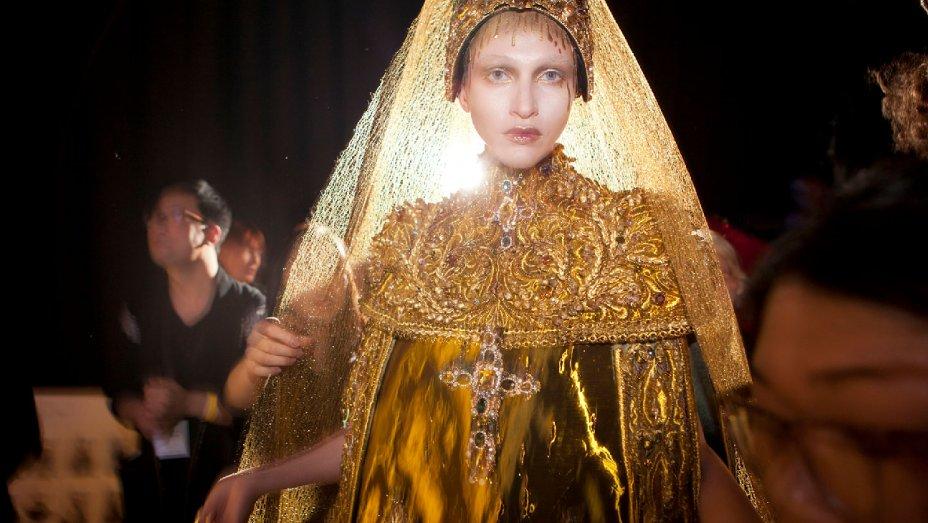“Stunning” is the best word to describe the documentary film “Yellow is Forbidden,” directed, written and produced by Pietra Brettkelly. This film takes an intimate look at Chinese couture designer Guo Pei and the creation of her 2017 spring/summer Legend collection. It also explores Pei’s desire to be recognized as a haute couturier by the Chambre Syndicale de la Haute Couture of Paris, an achievement often regarded as the apex of success in the fashion world.
The film starts off at one of Pei’s small, private clientele showings. It is here where she explains both to her patrons and interviewers the importance of Chinese history in her work. A close-up shot of a client sketching session where she points out different parts of the proposed dress and explains exactly what part of Chinese history she pulled inspiration from best represents this.
The documentary then transitions from this scene of glamor to one that is more humble: the outside of Pei’s home. She and her husband stand ready to take the camera on a tour focused on Pei’s family and her quirky collections of stuffed bears, kaleidoscopes and fashion books. This dichotomy between an enchanting fashion world and Pei’s personal life is an enjoyable element done frequently and well throughout the film.
Something else notable that is touched upon in the beginning of the film is how real the struggle is for eastern designers to be recognized by the western world and the unfair bias that Pei faces. Pei explains this in her own words and it is reinforced during her time in Paris where Parisian standards and opinions are shown to be overbearing and, at some points, oppressive.
The middle of the film focuses on the actual creation of Pei’s Legend collection, including things that range from searching through breathtaking scenes of Paris for inspiration to sitting in a small room loudly negotiating embroidery prices. The director does a good job showing all the elements of what goes into putting on a fashion show, not only the clean cut parts.
Another thing explored is Pei’s personality, which is one of compassion, humor and determination, as well as examining her roots in an interview with her parents. The interview was translated through use of a voiceover while intricately detailed paper shadow puppets acted out the stories told. This was one of the most captivating parts of the film and was a bold choice that was definitely worth the risk.
The end was focused on the actual show itself. The editing and storytelling does a good job of conveying just how stressful this time is by frequently changing angles and following on the heels of Pei as she goes around putting the final touches on arguably one of the most important shows of her career. Finally, the lights go up and all of Pei’s painstaking hard work is finally on display. The pieces are breathtaking and elaborately detailed with embroidery and jewels accompanied by rich yellow-gold tones.
The show concludes with a touching moment captured on film where American model Carmen Dell’Orefice and Pei hug and exchange quick I love you’s at the end of the show. Carmen Dell’Orefice, a friend of Pei’s, walked in the designer’s collection titled Arabian 1002th night and believed so strongly in Pei’s work that Dell’Orefice chose the Legend collection as her last runway performance of her life.
This film is as beautiful as the dresses themselves. It paints a portrait of an innovative, unique designer trying to successfully gain the recognition of the western world through aesthetic shots, surrealistic editing choices and amazing storytelling.
It is definitely worth the watch.
_Edited by Alexandra Sharp | [email protected]_








